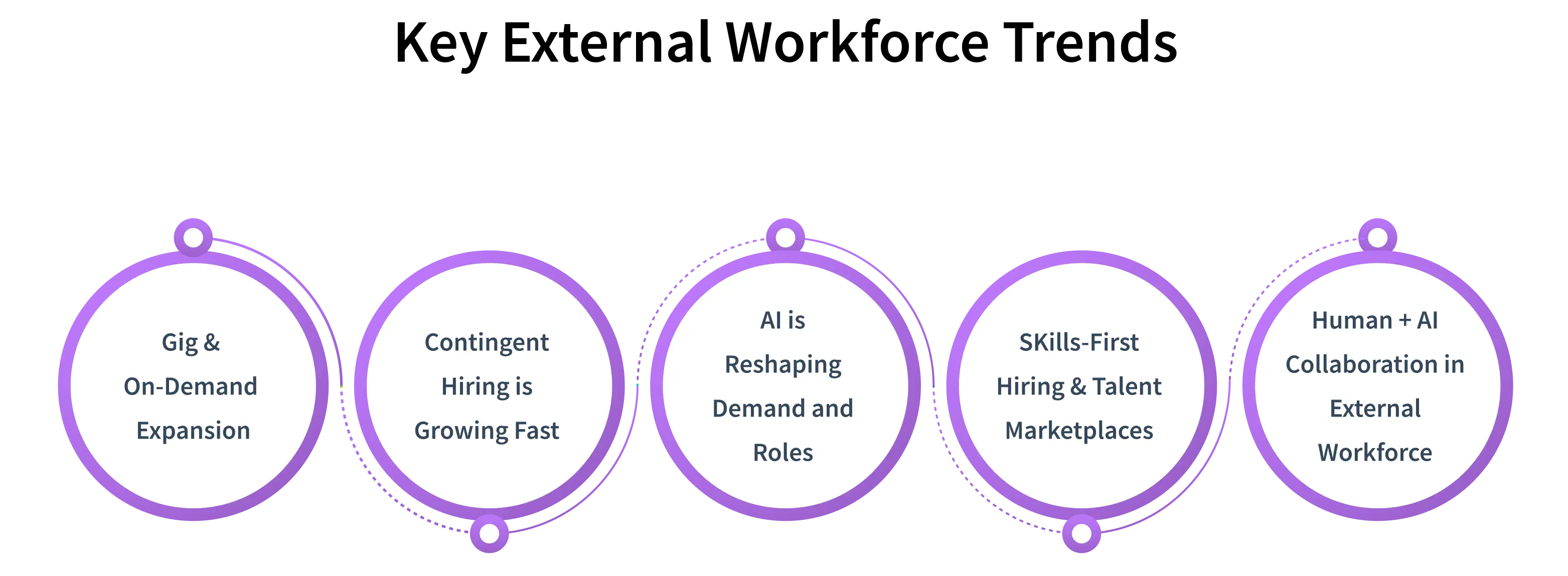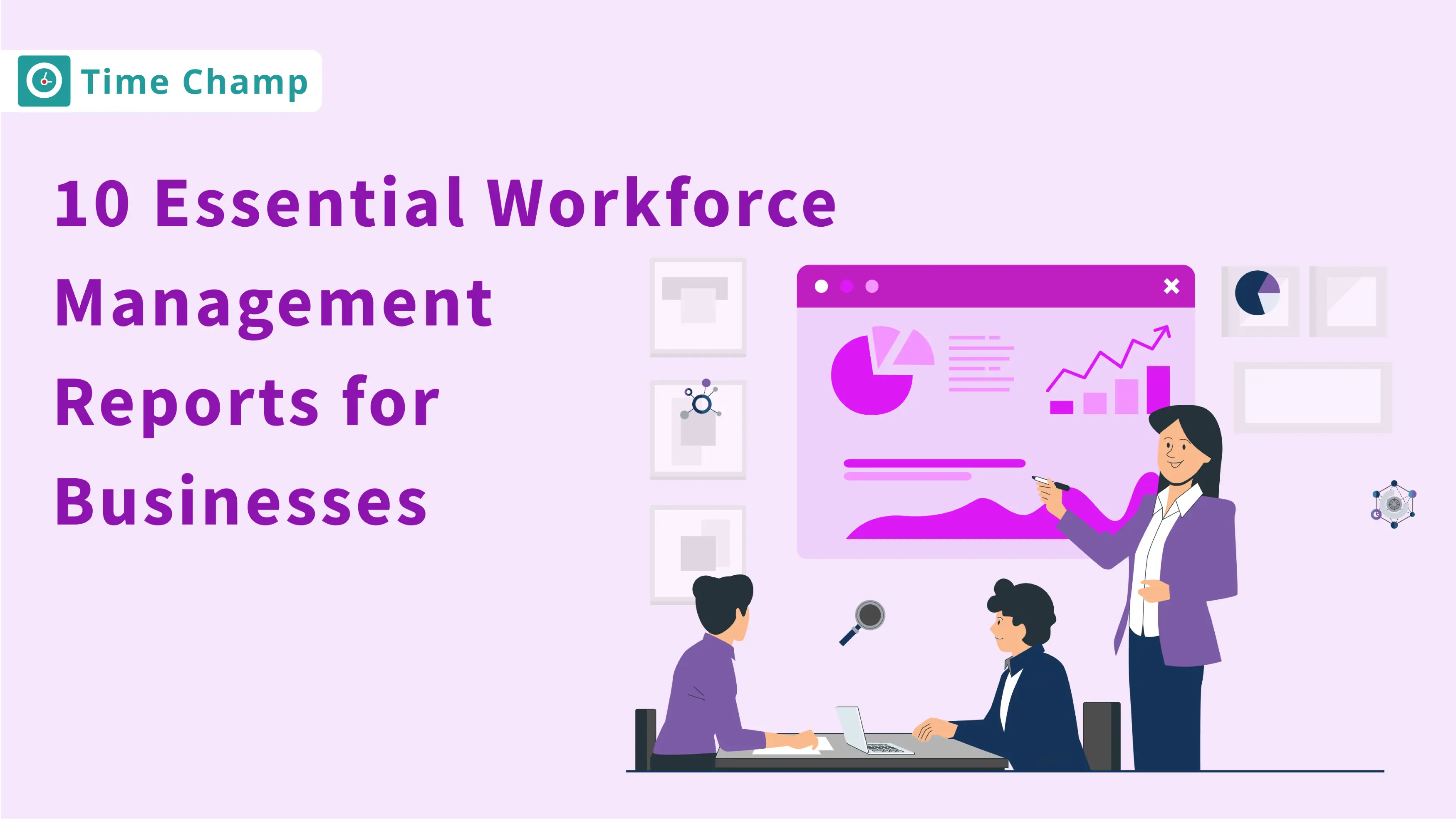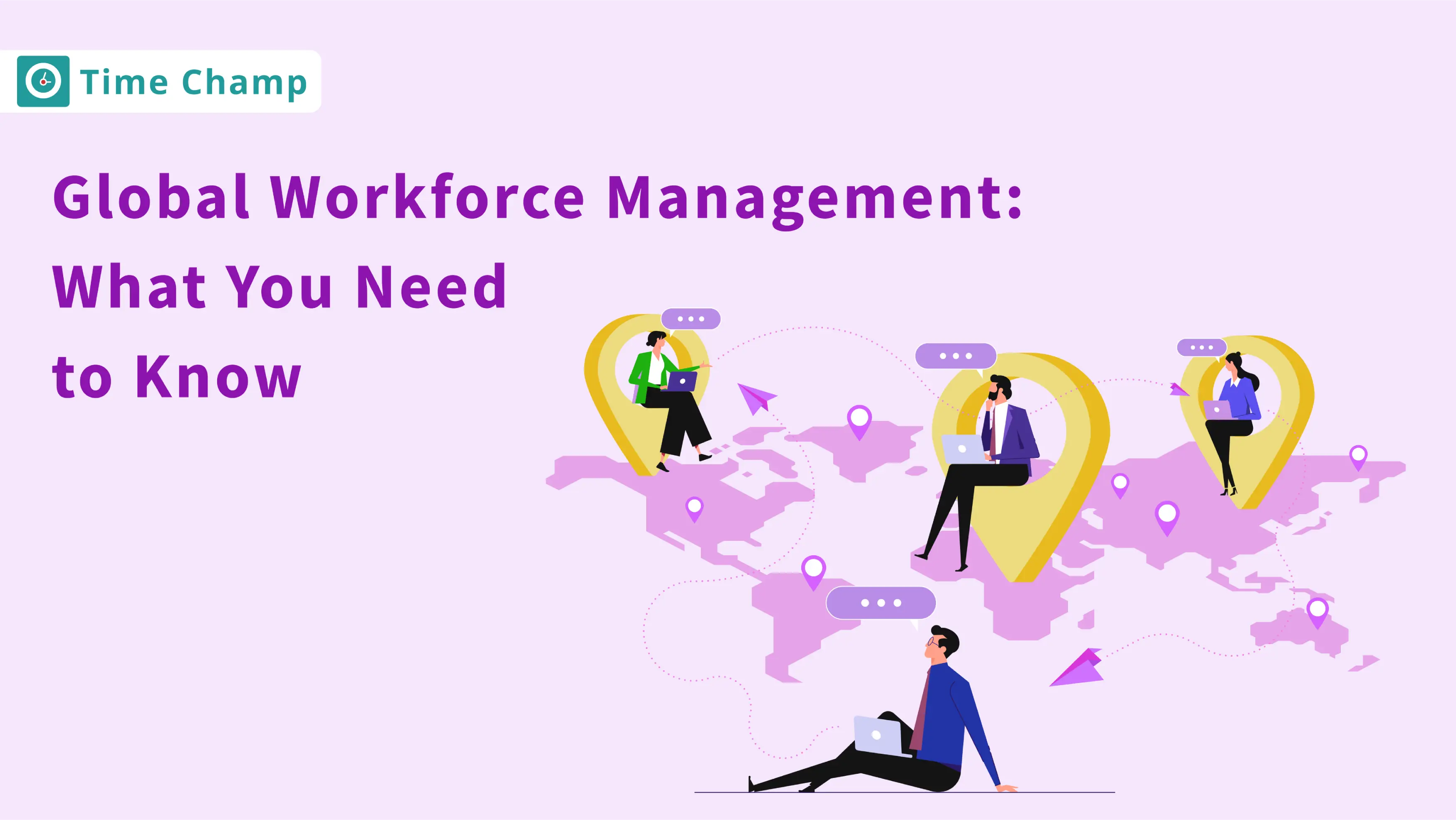Bringing in freelancers, contractors, or specialists sounds simple until coordination, communication, and deadlines start slipping. The wrong approach can lead to missed opportunities and frustrated teams. In this blog, we’ll show how effective external workforce management can help businesses scale, collaborate, and achieve results seamlessly.
What Is an External Workforce?
An external workforce refers to professionals who contribute to a company without being permanent employees. This includes freelancers, contractors, consultants, and temporary staff. Businesses rely on them for specialised skills, flexibility, and to scale operations quickly.
The concept of external workforce is not a recent one; it has roots in industries that depend on seasonal workers, contractual work or specialised trades. As time progressed, the term has been used to refer to a wider range of talent that functions outside of the traditional employment structures but is vital to business development.
Is the External Workforce the Same as the Extended Workforce?
Yes. The external workforce is often described as the extended workforce. Both terms refer to talent that works outside the core employee base. This includes freelancers, contractors, consultants, and service providers who contribute to business goals.
Many organisations use the terms interchangeably because both refer to talent working outside the core employee team. Whether it’s a short-term freelancer or a long-term contractor, these professionals help businesses get work done, add skills, and achieve goals without becoming permanent employees.
How To Manage and Engage the External Workforce?
Managing and engaging the external workforce is more important than ever. According to the MIT Sloan / Deloitte survey, 86% of organisational leaders believe that effectively managing external contributors, such as contractors, freelancers, and consultants, is critical to their success. Below are the key steps to manage and engage your external workforce effectively:

1. Identify Your Needs
Begin by knowing what skills or positions external talent should provide. Conduct an external workforce assessment to find gaps, project requirements, and the ideal engagement duration. This ensures you bring in the right people for the right tasks.
2. Source the Right Talent
When the needs are clear, concentrate on the external workforce sourcing. Look for freelancers, contractors, or service providers who have the right skills and experience. Prioritise candidates with a proven track record to ensure they can deliver quality work on time.
3. Welcome and Align External Talent
Onboarding assists the outside professional to understand your company culture, project objectives and methods of communication. Clear expectations reduce confusion, enhance collaboration, and set everyone up for success.
4. Enable Continuous Communication
Feedback and regular updates are important to ensure that external teams are on track. Technology for external workforce communication helps ensure smooth coordination, clear transparency, and better interaction across dispersed teams.
5. Monitor Performance and Contributions
Monitoring your external workforce on a regular basis keeps projects on schedule and goals are met. Measuring results and giving feedback helps identify improvements and recognise top performers. This keeps the team accountable and aligned with your objectives.
6. Foster Collaboration and Recognition
Promote teamwork between external professionals and internal teams to improve results. Reward performance and give feedback in order to keep them motivated. Valued contributors deliver better work and are more likely to stay long-term partners.
What Are the Pros & Cons of an External Workforce?
While the external workforce offers many advantages, it also comes with certain challenges. To understand the bigger picture, here’s a quick look at the key pros and cons:
| External Workforce Pros | External Workforce Cons |
|---|---|
| Access to specialised skills not available within the company. | Less control over daily work processes. |
| Flexibility to scale teams up or down quickly. | Risk of inconsistent quality of work. |
| Cost savings on benefits, training, and overhead. | Possible communication and coordination gaps. |
| Faster project turnaround with experienced experts. | Security and compliance challenges. |
| Faster project turnaround with experienced experts. | Security and compliance challenges. |
| Fresh perspectives and innovative ideas. | Lower sense of loyalty or long-term commitment. |
| Ability to enter new markets with local talent. | Extra effort required for onboarding and alignment. |
What Are the Key External Workforce Trends In 2025?
The way companies engage with external talent is evolving rapidly. In 2025, the workforce is becoming more flexible, skill-oriented, and technology-driven, with freelancers, contingent workers, and AI roles becoming an important part. The major trends that are influencing this change are as follows.

1. Gig & On-Demand Expansion
Companies are increasingly relying on freelancers, consultants, and project-based workers to scale quickly and access specialised skills without adding to long-term payroll.
According to the Upwork Research Institute, 28% of skilled workers now work as freelancers or independent professionals. This is a significant change since a lot of people are demanding greater autonomy, financial and meaningful opportunities outside the traditional work settings.
2. Contingent Hiring is Growing Fast
Beyond freelancers, more organisations are turning to contingent and non-employee workers to remain flexible. A global executive survey found that about 65% of the companies are planning to adopt more contingent workers within two years. This shift allows businesses to plug skill gaps while avoiding the rigidity of fixed headcount.
3. Skills-First Hiring & Talent Marketplaces
Employers are moving away from degree-based hiring, with 34% of companies no longer requiring a college degree for salaried roles. Rather, they put their emphasis on practical skills, backed by talent marketplaces and internal gig systems that are efficient in matching the right people on the right projects in a short time. This change also gives broader access to employees who are capable of demonstrating in-demand skills.
4. AI is Reshaping Demand and Roles
AI and automation are changing which skills are most valuable. Routine tasks are being automated, and there is increasing demand for workers who can use AI tools effectively. This is shifting the type of external skills companies source and how they define roles.
5. Human and AI Collaboration in the External Workforce
One of the major trends influencing the workforce is the incorporation of people with advanced technology. About 41% of high-growth companies now use mature human+machine AI strategies, encouraging both freelancers and full-time staff to enhance their skills alongside AI tools. This will not only enhance flexibility, but it will also enhance the stability of organisations in the fluctuating market.
How Do External Workforce Solutions Help Businesses Scale?
External workforce gives companies the flexibility to expand or reduce their teams according to project demands. They help businesses save on overhead costs while providing access to specialised skills that may not exist internally. This strategy enables organisations to remain responsive, effective in terms of timelines and quality output, even in times of peak manpower workloads.
Time Champ makes managing this dynamic workforce simple and effective. It offers features like workforce intelligence, real-time dashboards, and field staff tracking to keep external contributors on track and productive. Leveraging Time Champ helps businesses scale projects effortlessly, optimise resources, and make smarter, data-driven decisions to drive growth.
Conclusion
A well-managed external workforce empowers businesses to scale quickly and adapt to changing demands. Clear communication, structured workflows, and the right management approach keep external talent productive and motivated. Companies can achieve goals faster while building reliable, long-term partnerships. Engaged external teams become a true strategic advantage.
Frequently Asked Questions
An organised onboarding program with orientation, project brief, and access to collaboration tools will make the external workers learn the expectations quickly and begin their work effectively.
Performance metrics or management tools will be helpful in tracking the milestones of the project, its deliverables and quality of work, thus holding the project responsible and identifying improvement areas.
The external workforce solutions are effective in IT, creative, consulting, health care, manufacturing, and any other sector that focuses on projects and requires flexibility and specialised skills.
The establishment of collaborative platforms, communication of project objectives, and including external talents in meetings or updates can facilitate the alignment of the internal and external teams to the same goals.









